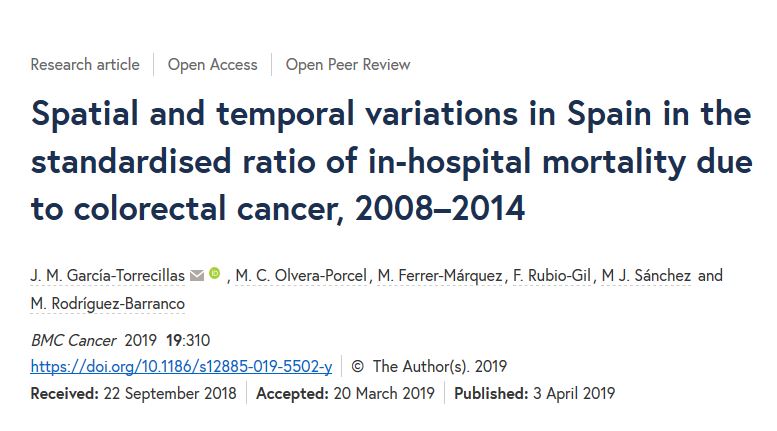
Background
Colorectal cancer (CRC) is the second cause of tumour mortality in Spain and Europe. To date, no studies have been conducted in Spain to evaluate the spatial and temporal distribution of the excess risk of death during hospitalisation for CRC.
Methods
A cohort was constructed of all episodes of hospitalisation in Spain due to CRC (codes 153 and 154 of the International Classification of Diseases, 9th edition, Clinical Modification) during the period 2008–2014, based on the minimum basic data set published by the Ministry of Health. Mortality ratios were calculated per region for each of the years analyzed (spatial or cross-sectional analysis) and during the overall study period, for each region independently (temporal or longitudinal analysis). In the first of these analyses, particular note was taken of the regions and years in which the limits of two and three standard deviations were exceeded.
Results
Two hundred and fifty eight thousand, nine hundred and twenty seven episodes of CRC were analysed. The patients were predominantly male (60.6%), with an average hospital stay of 13.16 days. Half underwent surgery during admission and on average presented more than six diagnoses at discharge. The spatial analysis revealed mortality ratios that deviated by at least three standard deviations in the following regions: Islas Canarias, Asturias, Valencia, Extremadura, País Vasco and Andalucía. The longitudinal analysis showed that most regions presented one or more years when CRC mortality was at least 15% higher than expected during the period; outstanding in this respect were Asturias, Navarra and La Rioja, where this excess risk was detected in at least 2 years.
Conclusions
Geographic and temporal patterns of the distribution of the excess risk of mortality from CRC in Spain are described using SMRs. We conclude that during the study period, the geographic pattern of mortality in Spain did not coincide with the excess risk of mortality calculated using the SMR method described by Jarman and Foster. This method of risk estimation can be a useful tool for the study of mortality risk and its spatial variations.


